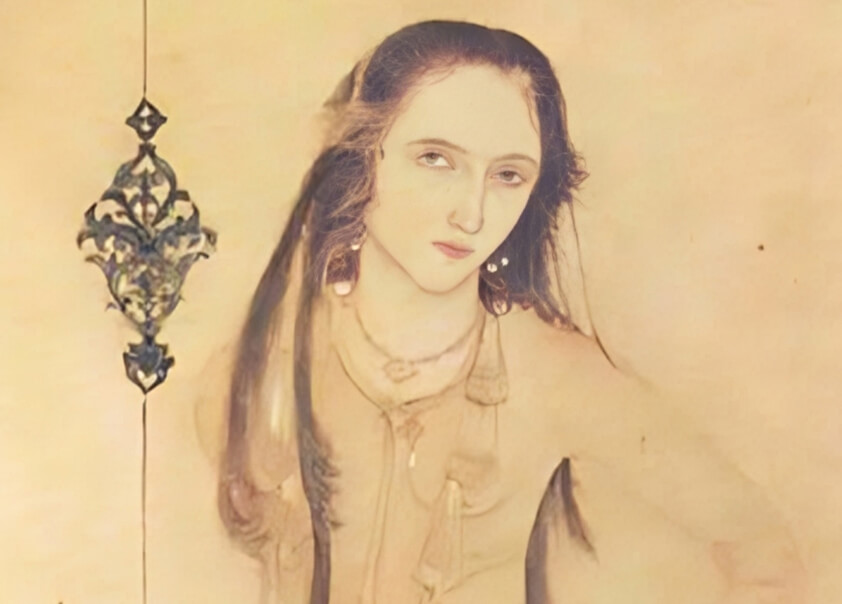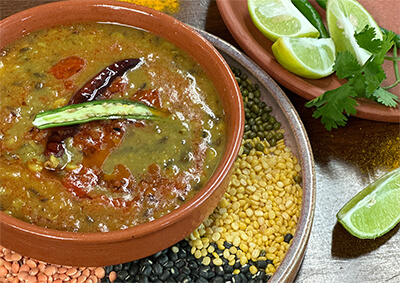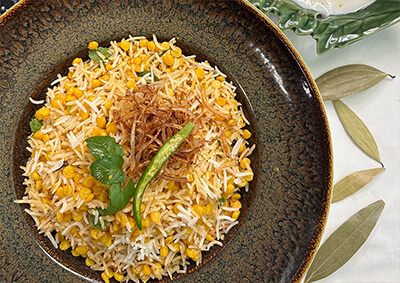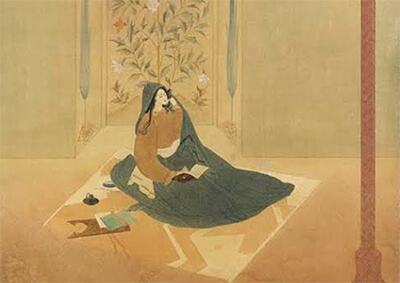Gautam Anand
The Importance of Being a Lentil
The lentil is given place of prominence at the high courts of the Mughal Dynasty. Gautam Anand enunciates, with the tales of the great Princess Zeb-un-Nissa, daughter of Emperor Aurangzeb, and her poetic life

The wine at night unto the morning lends Its exaltation, morning to the night. – From the Diwan-i-Makhfi, a compilation of writings by Zeb-un-Nissa.
The appeal of history resides in its capacity to bind us to the past and impart knowledge about the human condition. We learn about ourselves, our role in the world, and the power of our actions to influence the future via the inspirations of triumph and tragedy. The tale of Princess Zeb-un-Nissa teaches us important truths about mankind and life and surprises us with her poetic genius, secularism and a surprising love (like her father) of the humble lentils or dal*.
Aurangzeb’s daughter Princess Zeb-un -Nissa born on the 15th of February in 1638, took her first breath within the walls of the formidable fortress of Daulatabad, presently identified as Devagiri. On this momentous day, Aurangzeb spared no expense to celebrate the birth of his beloved daughter. He even bestowed upon his darling princess a gift of 30,000 glittering gold coins as a token of his pride and affection.
Born with a silver spoon she was the firstborn offspring of his beloved spouse, DilrasBanu Begum. Having learnt the entire Quran to memory at the tender age of three, the accomplished princess attained the esteemed status of a hafiza, a feat accomplished by the age of seven.
Aurangzeb’s austerity means that music and poetry had long since been banished from the court. Yet one group of poets managed to meet in the very precincts of the court for hidden poetic parties. This had been made possible because they had the membership of Aurangzeb’s eldest daughter, Zeb-un-Nissa, herself a poet of repute.
Let us examine her brilliance.
The brilliant polymath Zeb-un-Nissa had a library that was a treasure trove of knowledge. It was filled with the knowledge of the Quran, the Hindu and Jain scriptures, the enthralling tales of Greek mythologies, Al-Biruni’s Bible’s translations and modern writings about her illustrious ancestors. Books on a variety of topics, including law, literature, history and religion could also be found in this repository of knowledge, enlarging the minds of those who explored its depths. What an amazing collection it was, a monument to Zeb-un-Nissa’s passion for learning and her never-ending hunger or knowledge, is perhaps the lesser known love story.
Her poetry caught the attention of her tutor who advised Aurangzeb to find a suitable circle of accomplished poets from all over the country, to give her artistic company. This request was surprisingly acted upon.
As the mushairas played out on most evenings, it may very well be that Aurangzeb had chosen to look the other way. He would often think back fondly to an amusing exchange between his daughter and a prospective young suitor, who happened to be none other than the son of Shah Abbas of Persia.
The Emperor had been told that at one point during the feast Zeb-un-Nissa had arranged in the honour of the prince and his retinue, the prince had asked Zeb-un-Nissa for a certain sweetmeat, with a name that was a convenient double entrendre. Zeb-un-Nissa, quick to pick up the nuance, deadpanned that he could ask anything he wished from the kitchen... That itself may have caused a situation.
The Mughal dynasty influenced the Indian subcontinent in myriad ways, not the least of which were culinary. They were fond of nuts, raisins, saffron and fruits. The sheep and goats maintained by the royal kitchen were given “a special diet mixed with aromatic herbs, silver, gold, pearls, saffron marbles mixed with sugar, perfumed grass to get pleasant smelling flesh.” Rose water and musk were used to water vegetable beds to impart them a special aroma.
The extravagance of Mughlai cuisine which peaked during Shah Jahan’s reign was toned down by his son Aurangzeb.
The most austere of all the Mughal emperors, Aurangzeb fancied vegetarian dishes especially the panchmel dal and the pious qubooli. Let’s spend some time on atomising their back stories.
Panchmel Dal
It may not have the global reputation of dal makhani or the ancient connect of the chana dal (guguni), yet there is something endearing about panchratna dal (also called panchmel dal) that makes it one of the few lentil preparations that has a version for every state, well, at least most of it, and like most significant things in India, it has mythological origins. What is not surprising though is that if there is one ingredient with which Indian cuisine, and in that sense India, shares an umbilical-like connect, it has to be lentils or dals and as the next paragraph illustrates, extremely versatile.
As stated earlier, in the court and calendar of the austere Emperor Aurangzeb, celebrations are few and far between. However, guests of the Mughal ruler wouldn’t know the difference from before – they are treated to the same spectacular indulgence that has made Mughal hospitality a legend over centuries. Since hospitality begins at home, Aurangzeb extends some degree of indulgence to the patriarch he has deposed: his father, Shah Jahan. Confined to the fort at Agra just across the river from the TajMahal, a forlorn Shah Jahan has been given something to look forward to at last.
Aurangzeb has allowed Shah Jahan the choice of meal he would like to be served at his fort prison. However, the ailing ex-emperor is allowed to specify only one dish. The dish he mentions will be served to him every day for the rest of his life. Shah Jahan is in a fix. He is lucky to have good counsel at hand. The lively prison cook advises Shah Jahan to request dal, because it is versatile enough for him to make a different dish from it every day of the year. Recalling the many dal dishes he had been served as emperor, Shah Jahan sees this is an excellent suggestion. In his last days in confinement, these dishes of dal prepared at the hands of the inventive cook give him delight.
Let’s now move to the next of Aurangzeb’s favoured dishes.
The Qubooli
Qubooli is an Urdu word meaning acceptance, accession, admissibility, admission, admittance, agreement, approval, fulfilment (of prayer), granting, favourable reception and more, a beautiful word, reverential and with the depth of sincerity.
Food is a ritual and carries with it centuries of belief and tradition. Specific ingredients and preparations assume significance because of long-standing traditions or socio-religious contexts and are embedded into how communities pray and eat together and express their allegiance.
According to Rukat-e-Alamgiri (a book with letters from Aurangzeb to his son), the last powerful Mughal emperor who could manage to get almost the entire Indian subcontinent under his wings did actually enjoy the qubooli. Qubooli – an elaborate yet simple ensemble made with rice, basil, Bengal gram, dried apricot, almond (optional) and curd.
In the Deccan, even today, you will be served a qubooli, in many fine homes with salan, yogurt and tomato cut.
Back to Zeb-un-Nissa
Aurangzeb’s favour will not shine on Zeb-un-nissa for long. He will soon be informed of her complicity in helping Shivaji in his sensational escape.
The captivating personality of ChhatrapatiShivajiMaharaj drew many admirers, but for Zeb-un-Nissa, it was more than just admiration. Her heart began to ache when he arrived in Agra, causing a stir in the Mughal dynasty like an earthquake.
The last straw, however, will be evidence that she counselled her brother Prince Akbar in his rebellion against Aurangzeb. She will have her properties seized, pension cut off and she will be thrown into jail. There, in Salingarh Fort, at the edge of Shahjahanabad, she will spend her last years.
She will find solace writing poems, as she had before, under the name Makhfi (Hidden One).
Qubul ho ki na ho sajda o salam apna.
Tumhare bande hain hum, bandage hai kaam apna.
‘Accept it or not my prostration and adoration is unconditional.
We are your devotees your service is our salutation’.
– from a ghazal by Zeb-un-Nissa
Post Script
*India’s domestic consumption of lentils is nearly 2.5 million tonnes per year. It is forecasting 690,000 tonnes of Indian lentil imports for the 2022-23 crop year, which ends on March 31, 2023. Another 600,000 tonnes are projected to be imported in 2023-24.
The top lentil types that are being imported are tuvar, urad and moong. Red lentil (masur) and various varieties of chickpea and pea proteins are also being imported. Canada, Ethiopia and the U.S. are the three largest trade partners for India.




